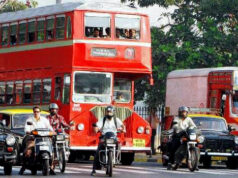By: Ishu Kumar (Communicating Reality Intern 2011, CCS)
In 2006, 44 percent of children under age five in India suffered from malnutrition; the number for Somalia was 33 percent! This is based on the WHO definition that a child is considered suffering from malnutrition if her weight is more than two standard deviations below the median. India is miles away from developed nations like Singapore and Germany where malnutrition levels are as low as 3.3 percent and 1.1 percent respectively (to view how nations fared over the last century in child malnutrition click PLAY and see graphs below). Hunger is real. The World Food Program website says:
“Despite significant economic progress in the past decade, India is home to about 25 percent of the world’s hungry poor. Although the country grows enough food for its people, pockets of hunger remain. Stark inter-state disparities exist with some states better off on all social indicators than the others. The states that suffer from hunger and malnutrition the most include Madhya Pradesh, Chhattisgarh, Bihar, Jharkhand, Orissa, Rajasthan and Uttar Pradesh.”
The “hunger-free campaign” that Oxfam International launched yesterday is of great significance in this context. Prof. Christopher Lingle, a friend of CCS, once said of the Delhi School of Economics, “the problem is that you teach poverty here, not wealth creation”. This is precisely the problem with Oxfam and the Amartya Sen gang. They ask “how do we push millions of starving people above the starvation line”, not “how do millions of people go from starving to opulent eating”. Frédéric Bastiat, a 19th century French economic journalist, once asked “How does Paris feed itself?” Bastiat observed that Paris did not have a central food authority, yet astoundingly enough there was bread, wine, cheese, and meat on dining tables. This was because entrepreneurs – thousands of them – plan to feed Paris each day, guessing possible demands and provisioning matching supplies. The multitude of plans coordinated by the invisible hand of the free market.
The problem is not one of food security, but of food opulence. The questions are: (a) How can India reach nutritional intakes similar to that of developed nations, and with (b) plenty of choice in the food Indians consume (as distinct from allocating more rice under the Public Distribution System). Unfortunately India feeds itself very differently from 19th century Paris. Both production and distribution of food is highly regulated. Amartya Sen had once said at a lecture in the University of Delhi that the “invisible hand” is “truly invisible”, the truth is very different. The invisible hand has been clamped by a myrid of government regulations including serious restrictions on private investment in agriculture and the Essential Commodities Act which hinders free flow of certain agricultural goods from one region to another. India sits amongst “economically repressed” nations in the Heritage Foundation’s Economic Freedom Index.
In 2010 Kamal Nath (then Union Minister for Road Transport and Highways) noted that 40 percent of fruits and vegetables produced in India rot before reaching the final consumer. India suffers from the tragic paradox of hunger on one hand and wastage on the other. Even critics would admit that free markets tend to limit wastage. Kamal Nath’s observation pertains only to losses in distribution, restricting private investment in production too has been suicidal. Sans private capital farmers get neither technology nor entrepreneurship, limiting productivity.
If India is to feed herself better, she ought to unleash the entrepreneurial latent that sleeps in her villages. Cold storages, efficient packaging, rapid transport, and the whole host of distribution infrastructure will arise only if India welcomes private investments in retail. We don’t see much coming out of Oxfam’s approach to hunger in India. On a more rhetorical day we’d have probably titled this article Oxfamine, but today is not one such day, and neither do we doubt Oxfam’s intentions. However the road to hell is often paved with good intentions.
Post Disclaimer
The opinions expressed in this essay are those of the authors. They do not purport to reflect the opinions or views of CCS.







